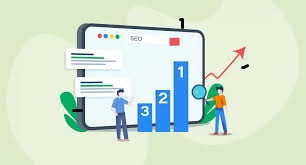This simply means that with mobile-first indexing, search engines put into consideration mobile version website.
Responsive Design: Be sure that your site is responsive or will fit all screen sizes.
Mobile Usability Testing: Check on those errors using the mobile-friendly test provided by Google to solve them.
Core Web Vitals: To keep an eye on accessibility, consider using web metrics such as the largest contentful paint, first input delay and the cumulative layout shift for mobile devices.
Crawlability and Indexability
Consequently, search engines leverage bots to crawl and index your site or your overall website. Technical SEO optimizes the design and the accessibility of your Web page.
Robots.txt File: Enhance this file to help the bots, friendly or hostile, to determine which links to follow or to neglect.
XML Sitemaps: Make and submit the outline of pages in XML format to Google Search Console for improved indexing.
Canonical Tags: Use the meta tag to avoid having the search engine index more than one copy of a particular page or post.
Safe and Easy to Use Web Sites
It has been observed that search engines and user both have their security concerns or priorities.
HTTPS Protocol: To enhance the security of your site you should use an SSL certificate.
Accessible URLs: The URLs should be clean and contain easily understandable elements for people as well as for crawlers.
Structured Data Markup
Although structured data do benefits your site in some ways like helping the search engine understand your content better, the visibility of your site with a rich snippet is boosted as well.
Schema Markup: The schema.org vocabulary should be used when tagging such items as products, reviews and events among others.
Testing Tools: After structuring your data you should check the validity of your work using Google’s Rich Results Test and the Schema Markup Validator.
Site Architecture
A proper structure has benefits for both site navigation and the crawl work.
Flat Architecture: To some degree, try to make the site’s hierarchy as flat as can be: no more than one or two clicks away from any other page.
Breadcrumbs: Although, you should also include breadcrumb navigation to enhance user and bot’s navigation in the site.
Internal Linking: Relate pages tactfully so that the authority can be spread and show customers where they should go.
The topic to be discussed in this chapter is Duplicate Content and Canonicalization.
Having two similar pages of content makes the search engines struggle and the rankings to be affected.
Canonical Tags: These should be used when pointing to the preferred version of a page.
301 Redirects: You should redirect all the instances of the same page to the primary version to centralise the power.
Content Audits: You should also keep checking your site for such problems as duplicate content on a regular basis.
Secondly, let’s dive deeper into some of the technical aspects.
International SEO
For websites that are being aimed at multiple countries or languages, international SEO helps them to target and index them correctly.
Hreflang Tags: Use hreflang meta tags to indicate the language and the geographical location of the target audience.
Localized URLs: Use country-specific domains or subdirectories such as .uk, fr.
Geo-Targeting Tools: Make changes about location features in the Google Search Console.

